
|
Rationalism:
| Readings: Roger Bacon Geocentric Model |
Science, it is widely agreed, originated from two main sources. One was the need to develop practical knowledge and to pass it from generation to generation. The other was a more spiritual concern with the nature and origin of the world. Common to both of these well-springs of science was an appreciation of the regularity of Nature. One of the first scientists to make frequent use of the concept of a law of Nature, in the sense that we now use that term, was the Franciscan friar and scholar Roger Bacon (c. 1214-1292).

The earliest beginnings of science was to note that there exist patterns of cause and effect that are manifestations of the Universe's rational order. We mostly develop this idea as small children (touch hot stove = burn/pain). But the extrapolation of a rational order to cosmology requires a leap of faith in the beginning years of science, later supported by observation and experimentation.
Thus, the main purpose of science is to trace, within the chaos and flux of phenomena, a consistent structure with order and meaning. This is called the philosophy of rationalism. The purpose of scientific understanding is to coordinate our experiences and bring them into a logical system.

Thoughout history, intellectual efforts are directed towards the discovery of pattern, system and structure, with a special emphasis on order. Why? control of the unpredictable, fear of the unknown, and a person who seeks to understand and discover is called a scientist.
Science is founded on the hope that the world is rational in all its observable aspects. Its possible that there may be some facets of reality which lie beyond the power of human reasoning, that there may be things with explanations that we could never grasp, or no explanation at all, but the fact that the world is rational is connected with the fact that it is ordered.
Eratosthenes:
Perhaps one of the first great discoveries under Greek rationalism was the true shape and size of the Earth. The early Greeks knew the Earth was a sphere due to the shape of the Earth's shadow on the Moon during a lunar eclipse. They also knew the size of the Earth due to the efforts of Eratosthenes (220 B.C.). Eratosthenes succeeded in measuring circumference of Earth in the following manner; he knew that on a certain date that a stick placed in the ground at Syene cast no shadow. Whereas, a stick at Alexandria has a small shadow. Using simple ratios he showed the following:
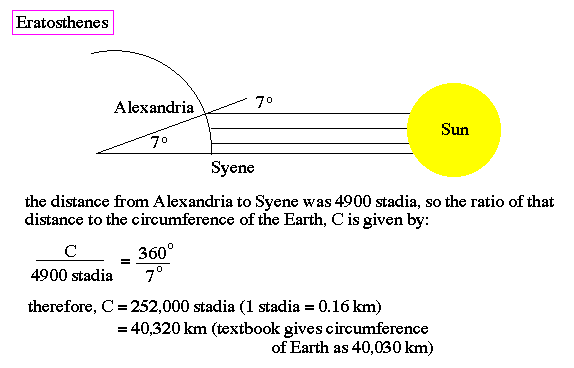
Geometric Cosmology:
There were only seven objects visible to the ancients, the Sun and the Moon, plus the five planets, Mercury, Venus, Mars, Jupiter and Saturn. It was obvious that the planets were not on the celestial sphere since the Moon clearly passes in front of the Sun and planets, plus Mercury and Venus can be seen to transit the Sun. Plato first proposed that the planets followed perfect circular orbits around the Earth. Later, Heraclides (330 B.C.) developed the first Solar System model, placing the planets in order from the Earth it was is now called the geocentric solar system model.
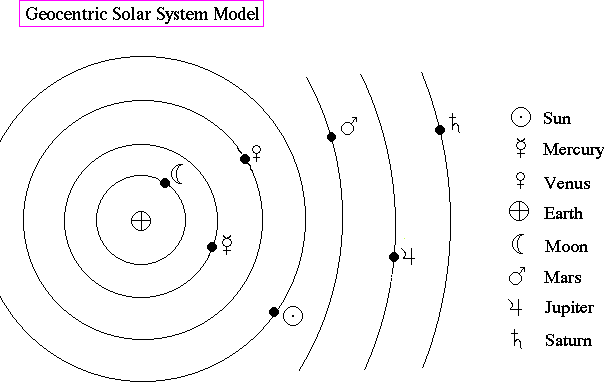
Slightly later, Aristarchus (270 B.C.) proposed an alternative model of the Solar System placing the Sun at the center with the Earth and the planets in circular orbit around it. The Moon orbits around the Earth. This model became known as the heliocentric theory
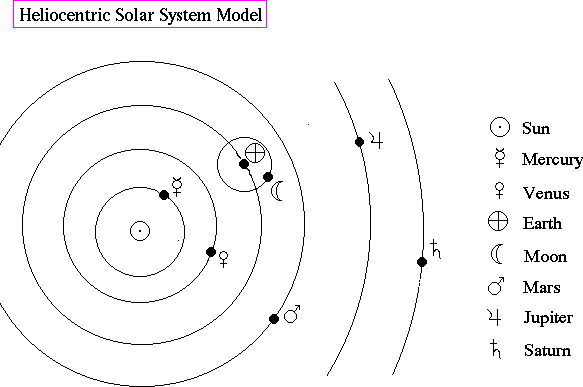
Problems for Heliocentric Theory:
While today we know that the Sun is at the center of the solar system, this was not obvious for the technology of the times per-1500's. In particular, Aristarchus' model was ruled out by the philosophers at the time for three reasons:
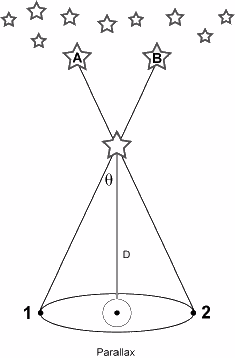
Of course, if all the stars are implanted on the crystal celestial sphere, then there is no parallax.
Ptolemy:
Ptolemy (200 A.D.) was an ancient astronomer, geographer, and mathematician who took the geocentric theory of the solar system and gave it a mathematical foundation (called the "Ptolemaic system").
Ptolemy wrote a great treatise on the celestial sphere and the motion of the planets call the Almagest. The Almagest is divided into 13 books, each of which deals with certain astronomical concepts pertaining to stars and to objects in the solar system. It was, no doubt, the encyclopedic nature of the work that made the Almagest so useful to later astronomers and that gave the views contained in it so profound an influence. In essence, it is a synthesis of the results obtained by Greek astronomy; it is also the major source of knowledge about the work of Hipparchus.
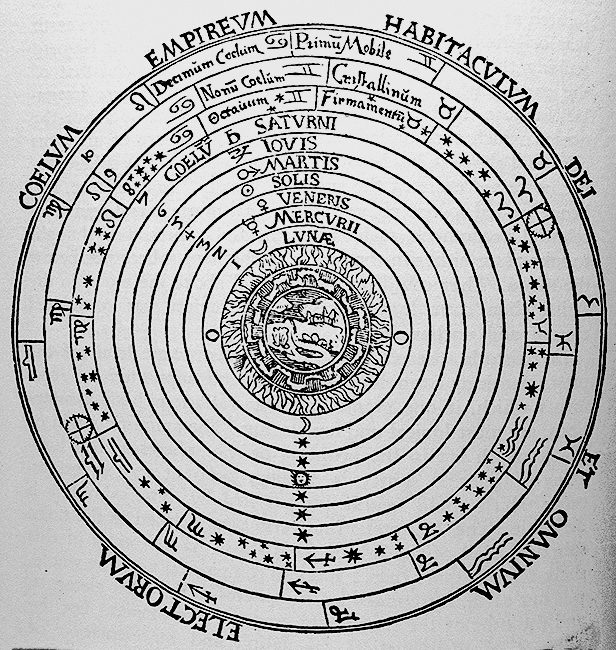
The Christian Aristotelian cosmos, engraving from Peter Apian's Cosmographia, 1524
In the first book of the Almagest, Ptolemy describes his geocentric system and gives various arguments to prove that, in its position at the center of the universe, the Earth must be immovable. Not least, he showed that if the Earth moved, as some earlier philosophers had suggested, then certain phenomena should in consequence be observed. In particular, Ptolemy argued that since all bodies fall to the center of the universe, the Earth must be fixed there at the center, otherwise falling objects would not be seen to drop toward the center of the Earth. Again, if the Earth rotated once every 24 hours, a body thrown vertically upward should not fall back to the same place, as it was seen to do. Ptolemy was able to demonstrate, however, that no contrary observations had ever been obtained.
Ptolemy accepted the following order for celestial objects in the solar system: Earth (center), Moon, Mercury, Venus, Sun, Mars, Jupiter, and Saturn. However, when the detailed observations of the planets in the skies is examined, the planets undergo motion which is impossible to explain in the geocentric model, a backward track for the outer planets. This behavior is called retrograde motion.
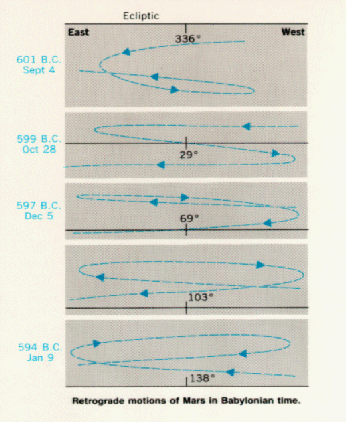
He realized, as had Hipparchus, that the inequalities in the motions of these heavenly bodies necessitated either a system of deferents and epicycles or one of movable eccentrics (both systems devised by Apollonius of Perga, the Greek geometer of the 3rd century BC) in order to account for their movements in terms of uniform circular motion.
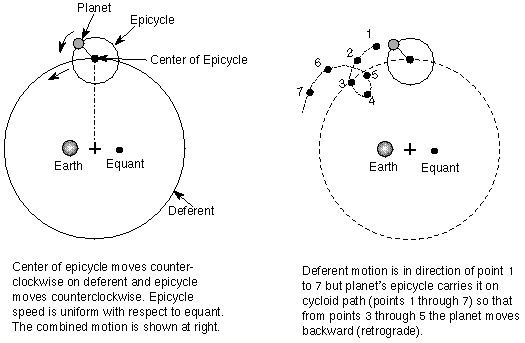
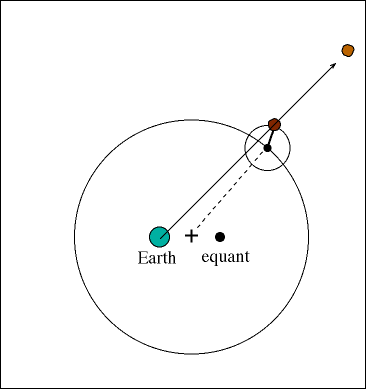


Copernicus:
As we know from history, the great library at Alexandria burns in 272 AD, destroying a great deal of the astronomical data for the time. Roman culture collapses and we enter the Dark Ages. But, the Roman Catholic Church absorbs Aristotle's scientific methods and Ptolemy's model into its own doctrine. Thus, preserving the scientific method and Ptolemy's Solar System. Unfortunately, the geocentric model was accepted as doctrine and, therefore, was not subjected to the scientific method for hundreds of years.
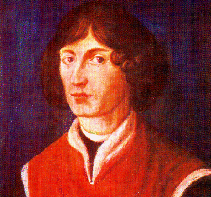

Planetary Configurations:
The planets outside of the Earth's orbit (Mars, Jupiter, Saturn, Uranus, Neptune, Pluto) are called superior planets
Likewise, the planets inside of the Earth's orbit (Mercury, Venus) are called inferior planets.

Aristotelian Universe:
The cosmological model adopted by the Middle Ages was the Platonic model by way of Aristotle. In this scenario, the Universe is composed of a central spherical Earth surrounded by a series of nested spheres. The sphere being the perfect mathematical figure makes the ideal cosmological object. For Aristotle, all motion required continual application of force (see below), therefore a void or vacuum between the spheres was a logical impossibility since isolated bodies would be motionless.
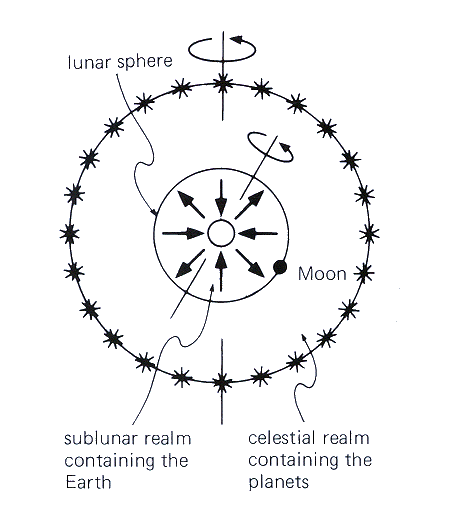
In addition, an Aristotelian Universe is steady state, meaning that it has existed unchanging through eternity and its perfect motions had no beginning or end. This will be modified by the Church to allow for Creation and God as the First Cause.
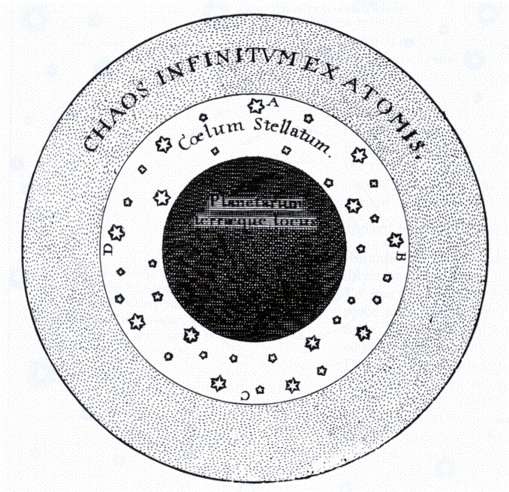

Middle Ages
The distinction between what makes up matter (the primary elements) and its form became a medieval Christian preoccupation, with the sinfulness of the material world opposed to the holiness of the heavenly realm (which is interesting since modern cosmology is heavily consumed with the issue of dark matter). The medieval Christian cosmology placed the heavens in a realm of perfection, derived from Plato's Theory of Forms
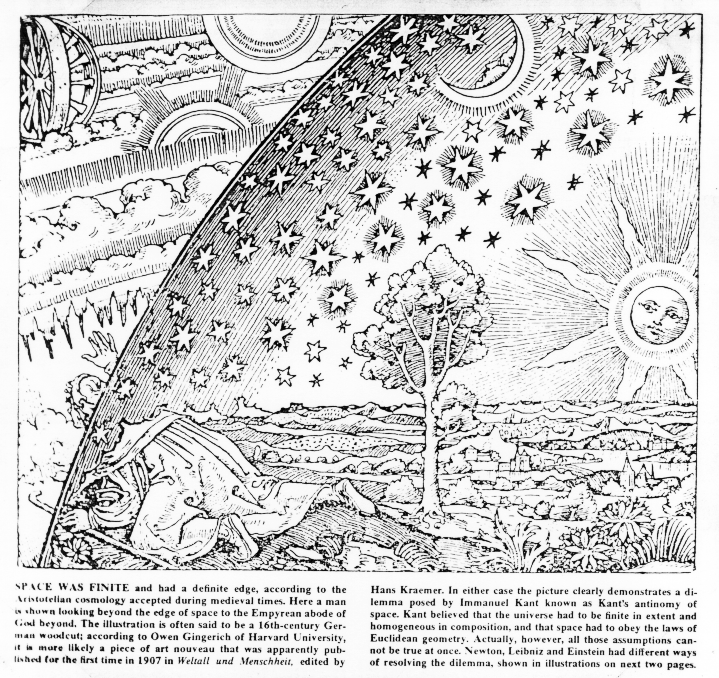
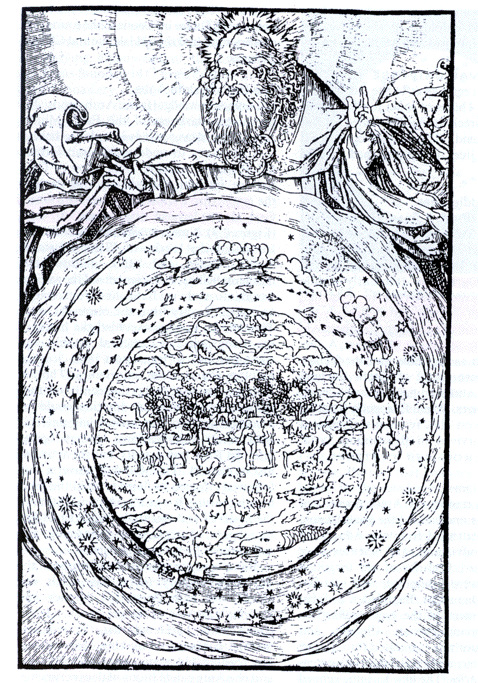
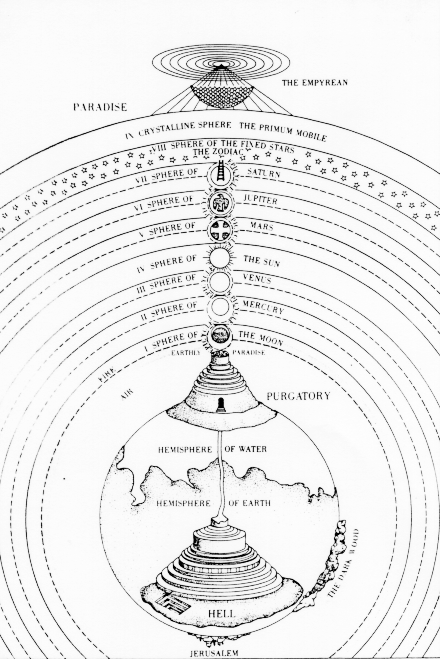
Since cosmology involves observations of objects very far away (therefore, very faint) advancement in our understanding of the cosmos has been very slow due to limits in our technology. This has changed dramatically in the last few years with the construction of large telescopes and the launch of space-based observatories.